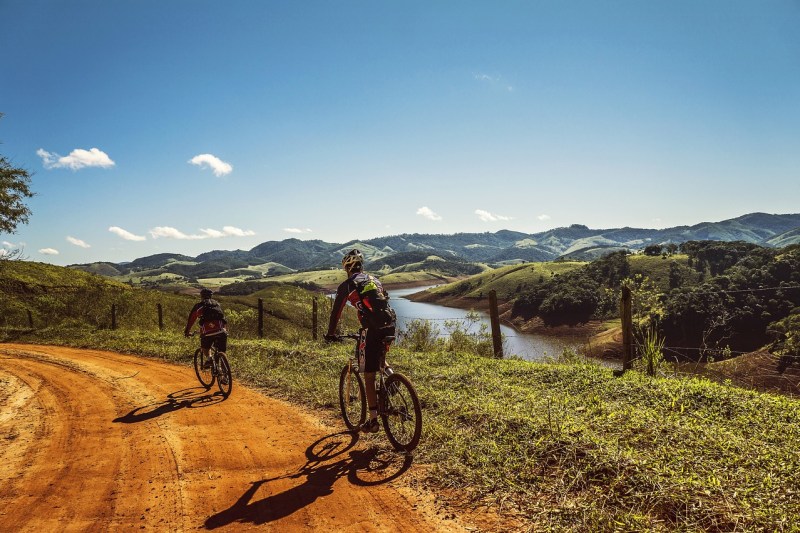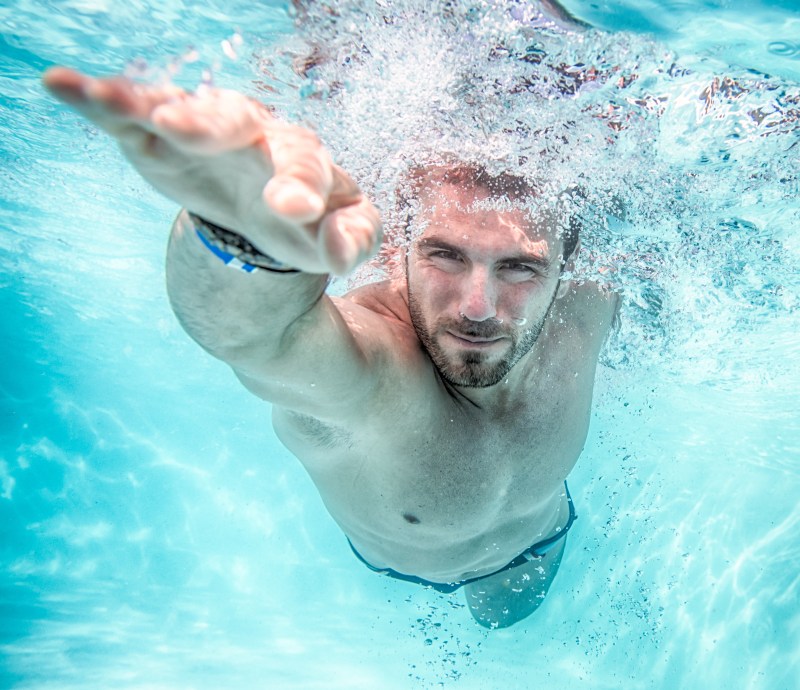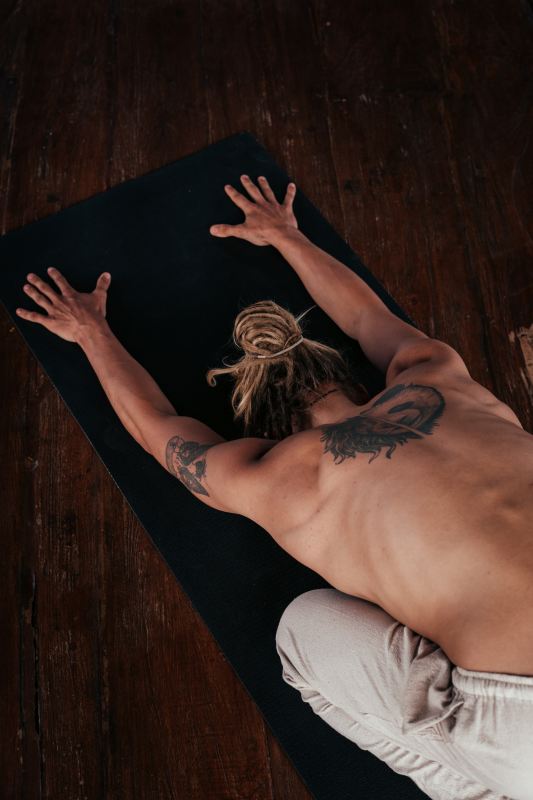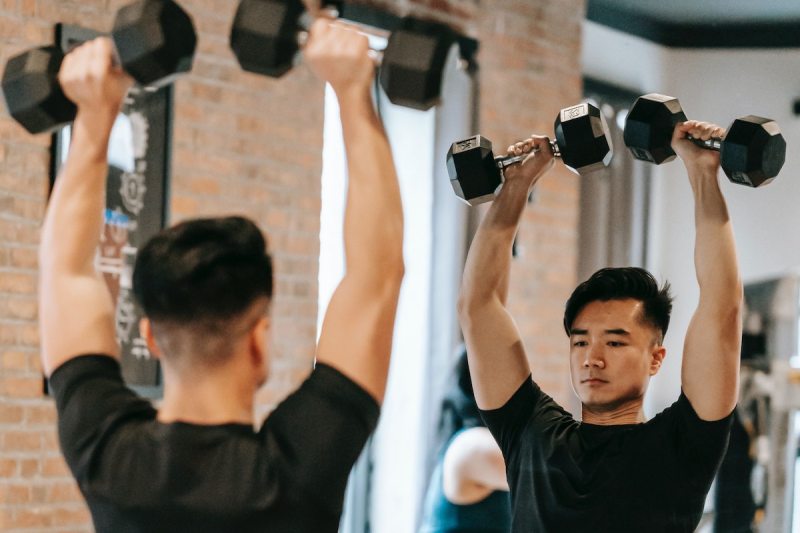From basketball to running, yoga to weightlifting, and racquetball to boxing, there are plenty of different sports and activities to choose from, regardless of your fitness level, interest, and access to equipment. But what about those with physical limitations?
If you’re suffering from a musculoskeletal injury or have a physical disability, running, jumping, or contact sports may not be safe or possible. Many popular go-to exercises are high-impact activities that place significant force on your bones and joints. Whether you can’t participate in your favorite sport or exercise modality while you rehab an injury, you have a condition where you have to protect your joints or tendons, or maybe you’re just looking for other workout options, it’s worth trying low-impact workouts. Read on for the best low-impact exercises for men.
What are low-impact exercises?

Low-impact is exactly that: Exercises with little to no impact on your joints, such as swimming where the water is helping support your body weight and there’s no slamming or jarring impact on your body.
Low-impact exercises are any sort of exercise where at least one foot remains in contact with the ground or is supporting your body weight. This is in contrast to activities like running or jumping because they have a period of flight when both feet are off the ground, followed by a high-impact landing. Low-impact exercise is not necessarily low-intensity exercise. Low-intensity exercise is a physical activity performed at a deliberately easy to moderate level, typically keeping your heart rate below 70% of your maximum heart rate.
What are the benefits of low-impact exercises?

Yoga, cycling, the elliptical machine, and other low-impact exercises offer a range of benefits. They’re a great way to stay active while reducing the stress on your bones, joints, and cartilage. As such, low-impact exercise is an excellent choice for those with injuries, bigger guys, and those new to exercise.
Low-impact exercise is also an ideal active recovery or cross-training activity for guys who participate in high-impact sports like running, basketball, soccer, or tennis. Your heart rate can be elevated while your joints and muscles undergo a gentle challenge.
Are low-impact exercises good for men?

All exercise helps release feel-good endorphins and gets your body moving. Low-impact exercises are especially good for men who are recovering from an injury, new to working out, or are trying to place less force on their muscles and joints while still getting the benefits of exercise. You can bring variety to your workout routine with a mix of low-impact and high-impact exercises for the best results.
Can you build muscle and lose weight with low-impact workouts?

Just because they’re lower impact doesn’t mean these exercises can’t promote muscle building and weight loss. You’ll still work your muscles, burn calories, and develop endurance and muscle mass when you add low-impact movements to your routine.
For example, swimming is a joint-friendly, low-impact option that still burns calories and incorporates strength, cardio, and flexibility. The freestyle stroke works your upper and lower body, particularly your shoulders, triceps, pecs, core, and quads. As Harvard Medical School reports, for a 185-pound person, 30 minutes of swimming burns about 252 calories.
What are the best low-impact exercises for men?

You can choose from many low-impact exercises, and picking the best ones depends on your fitness goal — improving cardiovascular fitness, building muscular strength, increasing flexibility, burning calories, etc. Here are some of our favorite low-impact exercises for men:
Power walking or hiking

Hiking outdoors in nature is food for your soul. Walking is probably the simplest form of low-impact exercise, but you can turn it into a more challenging workout with a few modifications. Incline walking on a treadmill or up hills keeps the impact down while boosting the metabolic demand.
You could also try power walking at a faster pace, wearing a weighted vest, or using hand weights to increase the challenge. There’s a good reason why rucking is so popular these days. Rucking means walking or hiking while carrying some type of weight on your back, typically a backpack or rucksack filled with stuff.
Cycling or spinning

Whether you choose to ride your bike outside or prefer a spin bike or recumbent bike, cycling is a low-impact cardio exercise that strengthens your lower body, builds cardiovascular fitness, and burns calories. It’s a good cross-training activity for runners due to the reduced stress on your joints and bones and the use of different muscles. Try to keep your cadence above 90 and the resistance high to boost your calorie burn.
Rowing

Rowing is often an underutilized form of low-impact exercise. However, what it lacks in popularity, it makes up for in benefits. Rowing provides a simultaneous cardio and muscle-strengthening workout, making it a good calorie-burning activity as well. You’ll work your legs, upper body, and core while minimizing the impact on your joints, whether you’re rowing in the gym on the machine or on the water.
Swimming

Swimming laps is an effective full-body cardio exercise with the water supporting your body weight, so movement is softer on your joints. This makes swimming an excellent option if you have a skeletal injury. Consider mixing up the strokes you use and throw in some fast laps for a real workout. You’ll improve strength, endurance, and muscle tone.
Aqua jogging

If you’re a runner, one of the best running-specific workouts is pool running or aqua jogging. If you’re nursing an injury or looking for a non-impact form of cross-training for active recovery from running workouts, aqua jogging is a perfect option. You’ll work against the resistance of the water, mimicking the running motion in the deep end of the water.
Some guys choose to wear a floatation belt, which is a smart decision for beginners. The belt will help give you enough buoyancy that you can focus on maintaining proper form and pushing the pace rather than keeping your head above the water. Because water running is non-weight-bearing, your heart rate won’t get quite as high as it does while land running, but you should still aim to get within 10-15 beats of your target land heart rate zones. To ramp up the intensity of the workout, throw in high-intensity intervals where you “sprint” for 30 seconds to 3 minutes. Water aerobics is a joint-friendly way to get moving for men of all ages.
Elliptical training

The elliptical trainer is a cardio favorite for many guys and a staple at most gyms. There are a variety of styles of the machine, but most involve moving your arms and legs in a flat or inclined elliptical stride pattern. You can increase the incline, resistance, and cadence to make the workout more vigorous.
Your feet remain in contact with the foot pedals at all times, so elliptical trainers are low impact though they are still weight-bearing. Rather than just hopping on and zoning out at a steady pace for your workout, try high-intensity interval training (HIIT) to accelerate your calorie burn. After a 5-10 minute warm-up, throw in 30-90 seconds of hard surges followed by 30-50 seconds of slower recovery. Complete 10-15 surges and then cool down with 5 minutes of easy striding.
If you’re an outdoorsy guy, you might go for the mobile elliptical-like outdoor bikes, such as the ElliptiGo, so you can take your elliptical workout on the road. While it isn’t cheap, if elliptical trainers are your preferred exercise machine but you’d rather be outside, investing in an ElliptiGo could be a smart investment.
Pilates and yoga

Most forms of yoga and Pilates aren’t too strenuous, but they still offer plenty of benefits, such as improving flexibility and balance, building core strength, improving posture, strengthening the mind-body connection, and relieving stress. Becoming a well-rounded athlete involves training all aspects of fitness, and if you’re looking to stay active on days when you aren’t doing intense training, Pilates or yoga is a worthwhile low-impact option. If you’re new to these activities, consider trying a yoga class for beginners or try a yoga or Pilates workout video on YouTube or another fitness streaming service.
Weightlifting

Most people tend to focus on cardio when they consider low-impact exercises. However, many weightlifting exercises are low impact, so you can still strengthen your muscles if you’re nursing an injury. If you’re able to stand and load your body with weights without exacerbating an injury, you’ll be able to take on almost any traditional strength training. However, you might need to try modifying the exercises so you’re seated or lying down, or consider resistance machines.
Certain exercises, such as squats, might not be possible, but you might still be able to work your muscles in other ways (like a leg press machine), depending on your physical restrictions. If you’re looking for more of a cardio workout, consider circuit training with minimal rest between weight-training exercises.
Stair climbing

Whether you hop on a stair stepper machine at the gym or hit up your local stadium or apartment building, climbing stairs is one of the most metabolically demanding, low-impact exercises out there. By working against gravity, you’ll get a full-body workout that gets your heart pounding and works most of the major muscles in your body. Climbing stairs torches a significant number of calories, so it’s an efficient mode of exercise.
As with regular running or walking, the faster you ascend the stairs, the more intense the workout will be. That being said, to keep the exercise low-impact, you’ll need to walk up the stairs rather than run. Additionally, stair climbing is still a weight-bearing activity, so it may not be suitable for all injuries.
Low-impact bodyweight exercises

Low-impact bodyweight exercises like split squats or plank moves involve using your bodyweight as resistance rather than a dumbbell or barbell. You can hit multiple muscle groups and improve your strength, stability, and posture over time. There’s no need for a gym membership or exercise equipment other than maybe a yoga mat or exercise mat, which is softer to lay on for some exercises. Even though you aren’t using weights, your muscles are still working under tension, but you aren’t exerting too much pressure on your joints.




